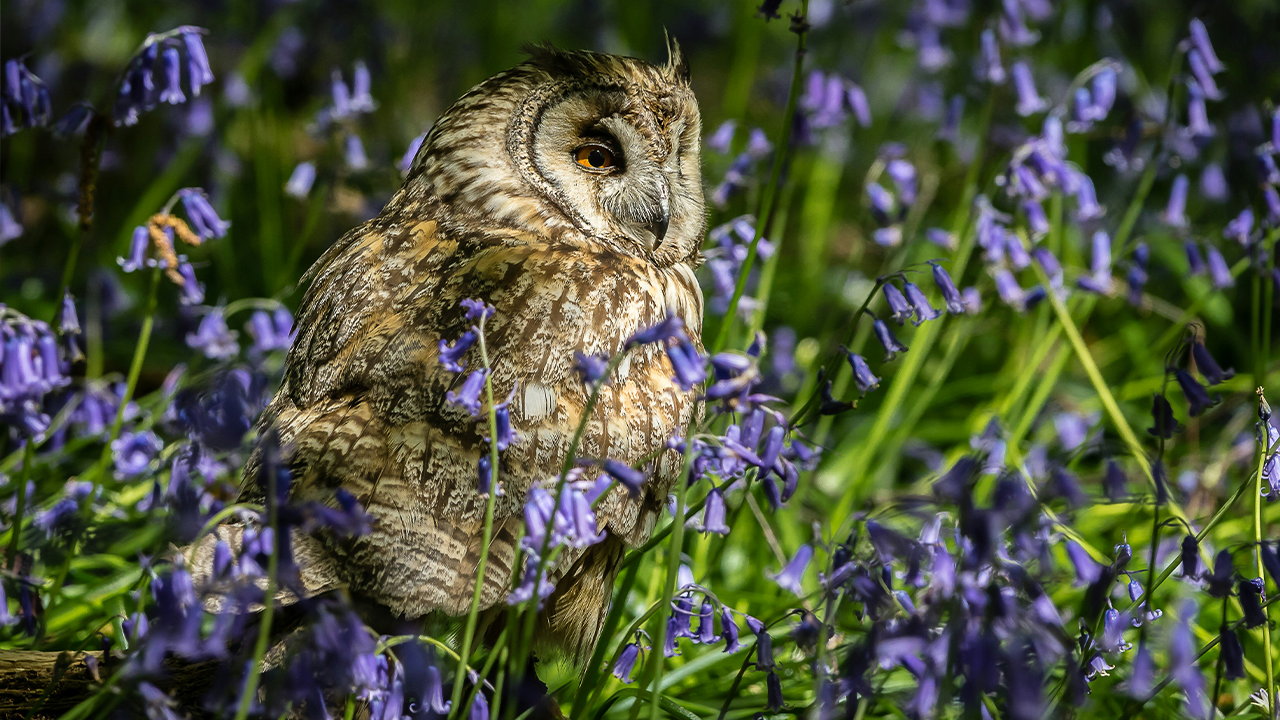
25, April 2025
Beautiful Bluebells and Where to See Them
Bluebells are a natural national treasure. Every spring, these iconic, bell-shaped blooms bring a sea of bright blue and their distinctive sweet scent to our ancient woodlands. And we’re lucky to have them: around half of all the world's bluebells grow in the UK. Keep reading to find out where and when to see bluebells, why they need protection and how to grow your own.
WHEN DO BLUEBELLS FLOWER?
Bluebells usually bloom in April and May, although they can sometimes appear as early as March. The peak time to catch them is between the end of April and the beginning of May. Bluebells are among the last of the woodland flowers to bloom, taking in the dappled light of the forest floor before it’s blocked out by summer foliage on the trees above.
WHERE DO BLUEBELLS GROW?

Bluebells are woodland flowers. They thrive in ground that has been undisturbed for a long time and are an indicator species for ancient woodland. As well as woods, bluebells can grow in gardens, parks and on grass verges.
BLUEBELL WOODS NEAR ME
The best place to see (and smell!) bluebells’ spectacular spring show is in ancient woodland. If you’re not sure where your nearest ancient woodland is, see this guide from the Wildlife Trusts. It features more than 100 of their free-to-enter bluebell woods, located throughout the UK.
ARE BLUEBELLS PROTECTED?
Yes. The common (native) bluebell is a protected species under the Wildlife and Countryside Act (1981). It is illegal to uproot the plant or bulbs without the landowner’s permission, or to sell or transport for sale any part of a common bluebell plant, including the seeds. Bluebells are under threat in some areas from the destruction of their habitat, being picked, trampled on or dug up, and hybridisation with non-native Spanish bluebells (more on those below).
CAN YOU PICK BLUEBELLS?

Although picking bluebells isn’t technically against the law, you should not pick them because they’re a vulnerable species that’s valuable to pollinators, and also because they are toxic. The National Trust forbids the picking of bluebells on their land as part of their efforts to protect them. It takes up to seven years for bluebells to reach the flowering stage from seed, and when the delicate plants get damaged or trampled, recovery can take years. So, if you’re visiting a bluebell wood, stick to designated paths and leave the flowers alone for the bees, butterflies (and other visitors!) to enjoy.
ARE BLUEBELLS POISONOUS?
Yes, every part of the bluebell plant is toxic to humans, dogs and livestock – and their sap can cause skin irritation. Another reason to look (and smell) but not touch!
SPANISH BLUEBELLS

Spanish Bluebells (Hyacinthoides hispanica), Halligarth, Baltasound - geograph.org.uk - 5402090" by Mike Pennington is licensed under CC BY-SA 2.0.
Spanish bluebells were brought to the UK as a garden plant in Victorian times, but made their way into the wild and are now classed as an invasive species. They grow more vigorously than common bluebells, meaning they can take much-needed space and light away from the native plants. Common and Spanish bluebells can also crossbreed, creating hybrid species which are a threat to the common bluebell.
At first glance, the two plants look very similar, but it’s easy to tell the difference. Common bluebells are purplish with cream-coloured pollen and thin leaves, and they grow on a curved stem. Spanish bluebells have paler flowers with blue or green pollen and wide leaves and grow on a straight stem. Plus, common bluebells have that wonderful, sweet aroma that fills forests in spring, but Spanish bluebells have no scent at all.
HOW TO GROW BLUEBELLS
Fancy your own mini bluebell wood? You can grow bluebells in a shady corner of a garden with moist but well-draining soil. It’s best to plant bulbs, which you can buy from garden centres, because it can take years for bluebells to grow from seed. Make sure you buy native common bluebells (Hyacinthoides non-scripta, to give them their Latin name) and not Spanish or hybrid varieties – and follow the planting instructions carefully.
WHEN TO PLANT BLUEBELLS
Plant bulbs in autumn, giving them a chance to grow roots before winter arrives. You can also buy established bluebell plants, which should be put into the ground in spring. Be patient: it can take a couple of years for your bluebells to bloom in all their glory, but they’ll be worth the wait.
 Liked this? You might enjoy:
Liked this? You might enjoy:

